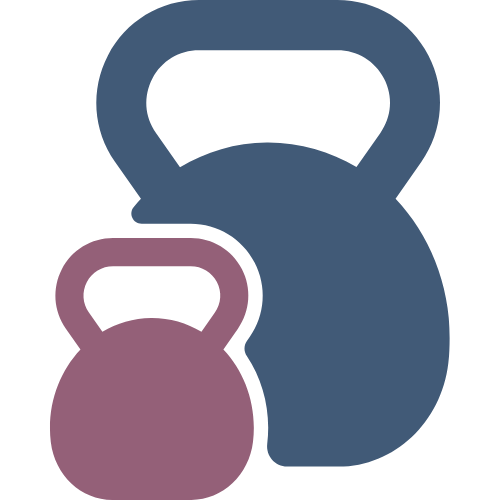During our 7-part skills series, we'll introduce you to skills that help you develop a better relationship with your body, awareness of your movements, and build a foundation of strength for doing any type of physical activity.
When I first started coaching, I had a few clients come close to passing out in their first sessions. I always made sure to give them super simple, slow, basic exercises their first workout, but it kept happening. What was I doing wrong? What did I need to change?
I quickly realized my clients weren’t breathing! They were so busy listening to my cues and so nervous about working out again that they forgot to breathe, and when they did breathe it was shallow breaths in their upper chest.
This type of breathing actually turns your stress response up higher, locking you into a vicious cycle and leading to feeling like you’re going to faint.
Breathing by expanding your lower ribcage and stomach creates a calming effect and allows you to take in a larger amount of air (thus oxygen) and then release more air (carbon dioxide).
I’ve found two great ways of building this skill: Balloon breathing and crocodile breaths.
Balloon Breathing
For Balloon Breathing, lie down or sit comfortably in a chair. Place one hand on your stomach and one hand on your chest. Make a note of how much your upper chest is rising and falling and see if you can expand your stomach and lower ribcage like a balloon more than your chest/upper rib cage. You can practice this throughout your body scan, as a separate skill practice, or during exercise. Ideally, this type of breathing becomes your default.
Crocodile Breathing
Crocodile Breaths help build your diaphragm and some of my clients really love starting and/or ending their workouts with this practice. Lie face down on a comfortable, yet semi-firm surface like a yoga mat or carpet (a bed is not ideal for this practice). Stack your hands and rest your forehead on the back of the top hand.
Like the Balloon Breathing, see if you can expand your stomach and lower rib cage. This time though, the ground will be there, forcing you to put a little bit more effort into expanding by using your diaphgram. Exhale either through your nose or mouth and focus on completely relaxing every muscle in your lower back. My clients with chronic pain related to “rounding” in their lower back really love this practice because it allows them to be in the extended position (opposite of rounding) while totally relaxing the muscles.
Tension while breathing
After you feel confident in your breathing, try adding tension through a plank while still breathing through your lower ribcage and diaphragm.
Wall Plank
Stand a few feet away from a wall and lean into it bracing with your arms out in front of you. Imagine you’re pushing the wall over and contract every muscle in your body. While doing so, continue your Balloon Breathing, although your stomach will not expand as big, since you’re contracting your core muscles). Hold for up to 10 breaths, 3 to 5 rounds with a 30-60 second rest in between.
Chair Plank
Same as practice 1, but this time on a table or a chair. Make sure your hands, wrists and shoulders are stacked vertically. Hold for up to 10 breaths 3 to 5 rounds.
Floor Plank
Now try the plank on the ground. Then, try on your elbows instead of straight arms. Hold for up to 10 breaths 3 to 5 rounds.
The key to this practice is to hold as much tension as possible in your muscles while still maintaining calm, deep breaths using your diaphragm. It’s better to master the wall and chair planks with proper breathing than to skip ahead to the floor plank, doing it until you’re breathless and straining.
Note that for all of the following skills in our series, you’ll continue to use tension while breathing. This will allow you to remain stable for all types of movements while still getting plenty of oxygen and releasing carbon dioxide.
